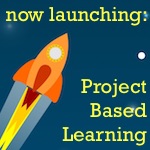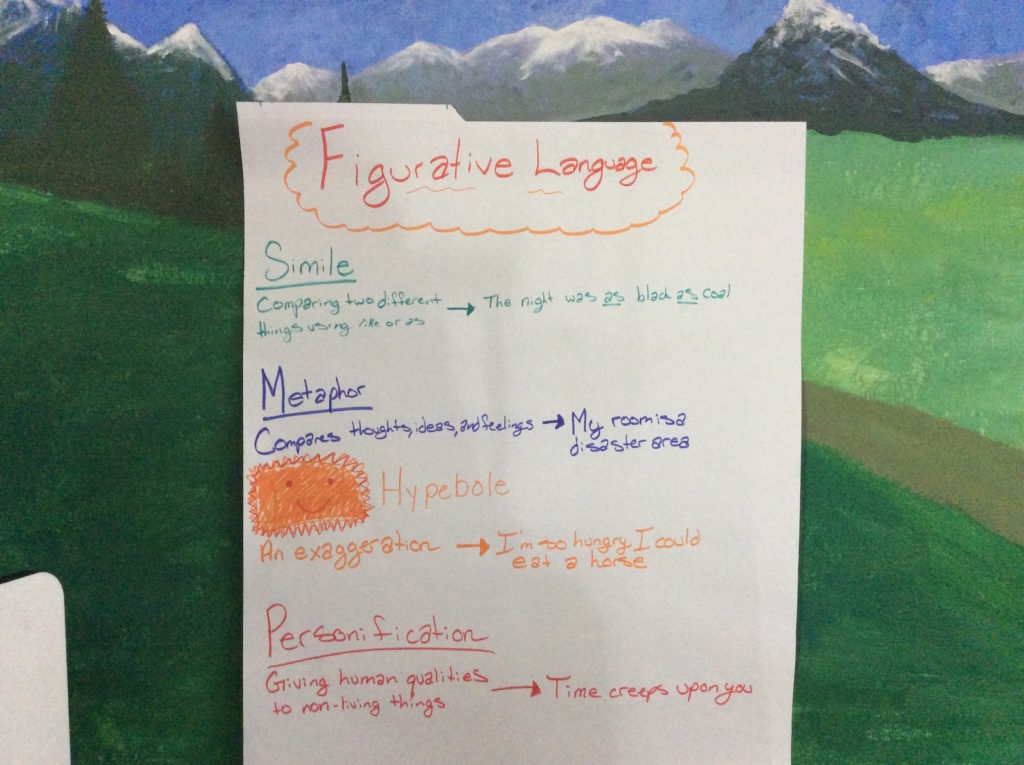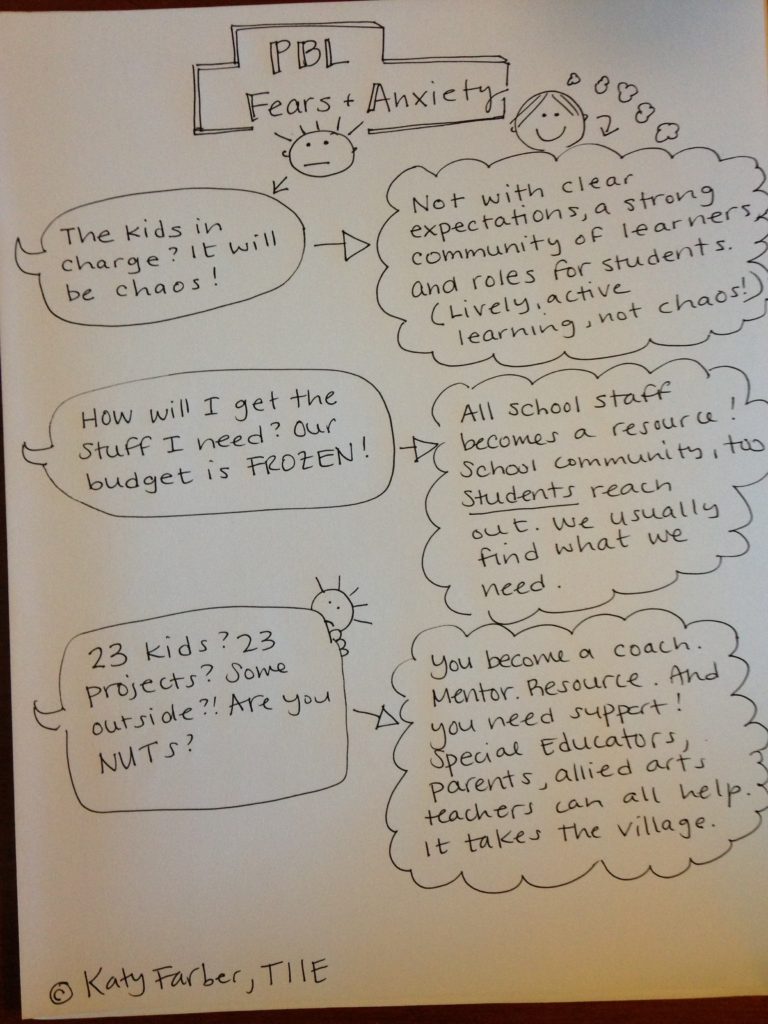Build a community to support project-based learning
 I bet you have big dreams of creative, innovative projects and engaged students in your classroom. Students who are busy researching, collaborating, creating, and solving authentic problems they are interested in.
I bet you have big dreams of creative, innovative projects and engaged students in your classroom. Students who are busy researching, collaborating, creating, and solving authentic problems they are interested in.
But this doesn’t happen without a strong community of learners.
Why build a strong classroom community?
Project-based learning, or PBL, is a wonderful way to engage students in their own learning. But if the community is not ready to feel safe, take risks, and be supportive it can fall flat. Here are some ways to build a strong, supportive and inclusive community that is ready to engage and be inspired by PBL.
Team building activities
During the planning for the first few weeks of school, it is so important to build trust, community and shared experiences. One way to do this is to schedule regular team-building activities. These are a fun break from hearing about expectations and instead doing get-to-know you activities because they are often physical and challenge different learning styles. See the link for ideas and grab a few that fit your schedule.
Ownership of the space
Many teachers love to set up their classrooms just the way they think their students would like it. But why not ask them?
“Giving students their choice of work space empowers them to make their own decisions and monitor their own behavior.” –Paul Solarz, Learn Like a Pirate
Consider how you can use your classroom’s physical space to give students choice and help them feel comfortable.
Set up a “rough draft” of the classroom, and ask for student feedback and ideas. Often the best ideas come from students, and they will feel empowered about designing learning spaces that fit their needs. Students can give feedback about desk spacing, reading areas, independent work areas, decorations, and collaboration spaces.
Develop community norms
If you are a Responsive Classroom school, this is nothing new, but it is vital. Help your class design a set of norms that guides everyone. They usually boil down to respecting yourself and others, but student voice and wording matter here. Ask students: “How would you like our class to feel? What will help you learn the very best and be inspiring and motivating to you?” Then list all the ideas. Whittle these down to a few guiding principles. Print out a large version for students to sign and then you can hang it in the meeting area. Share a copy with parents, too, so they know the expectations for the class.
Lindsey Halman and the rest of the team at Edge Middle School have deliberately cultivated a community conducive to student-centered project-based learning. She and fellow coordinator Phil Young talk about the concrete steps they used to create a safe space for project-based learning.

Model community discussions
During the first few weeks of school it is critical that students learn how the class will solve problems, work out difficult issues, and discuss complex events (in the world or in literature). Brainstorm with the class what makes a good discussion on chart paper. Then have a few students do a “fishbowl” where they make a smaller circle within a larger one. The small circle should discuss an issue, such as some current event or a book they have read. The outer circle watches and notes how it went. Share out ideas and create norms for small and large group discussions.

Is everyone heard? Did we disagree but show respect? Did we supply evidence to support our ideas? Modeling goes a long way, especially since in the media there are lots of examples of the opposite.
Develop strong relationships
What do students want? Usually to be seen and feel heard. They want to feel welcome and a part of something. Use the first few weeks of school to try and connect to each student. Schedule activities that let you get to know students personally, such as these ones. Pay attention to what students share and then ask follow up questions. Listen. Be excited to see them. This is the foundation of a strong class community.
Do activities that promote diversity and different learning styles
In those first few weeks, you have a perfect opportunity to learn about your students’ learning styles. This can inform your whole school year. Schedule several ways to discover learning styles. Here are some ideas on Pinterest.
Growth mindset
This one is so important and often overlooked by our culture. Students need to know that the classroom and community is a safe place for making mistakes. They need to know they won’t be embarrassed by either the students or teachers for stretching, trying something new, taking chances with their learning.
Taking this one step further, students need to know that mistakes grow their brains, and that they helpful in the learning process. Here is a great website all about growth mindset in math, and growth mindset activities and visuals. Make a chart that lives in the classroom about Growth Mindset.

Build student leadership
Students will be more engaged and motivated if they have leadership roles in class from day one. Here are a few ideas for how to build leadership opportunities in the class:
- Give me 5: Students and teachers can interrupt classes at any time for announcements, a-ha moments, questions, or to share resources. All students have this power. It needs to be taught and modeled. See this post for more on Give me 5 and other ideas to promote students leadership.
- Student jobs in the classroom: students are responsible for tasks that build community and responsibility (tech maintenance, writing homework on class blog or whiteboard, reviewing the day before, absent minded professors (catch up students who were absent).
- Build community by pairing kids in different groups for activities. You can use popsicle sticks to randomize this so partners are always changing.
- Responsibility partners: For larger projects, assign a responsibility partner to students. This student can help brainstorm ideas, they can keep each other on task, and problem solve.
- Reflection and Responsibility for learning. Move students toward shared responsibility for learning. Ask these at the end of the period or day–”What can I do better next time? How can I help my peers do better?” This promotes collective responsibility and individual leadership. All boats sink or rise together.
The beginning of the school year is a zany time for teachers and students both. There is so much to do. When you build a strong classroom community, students learn they are part of an inclusive, responsive, and respectful learning community and can challenge themselves to do high quality, relevant, and exciting project based learning.



This looks very interesting Project Based Learning we also have Concept Based Learning conceptual clarity as the guiding wheel to set practice and academic excellence wheels rolling.